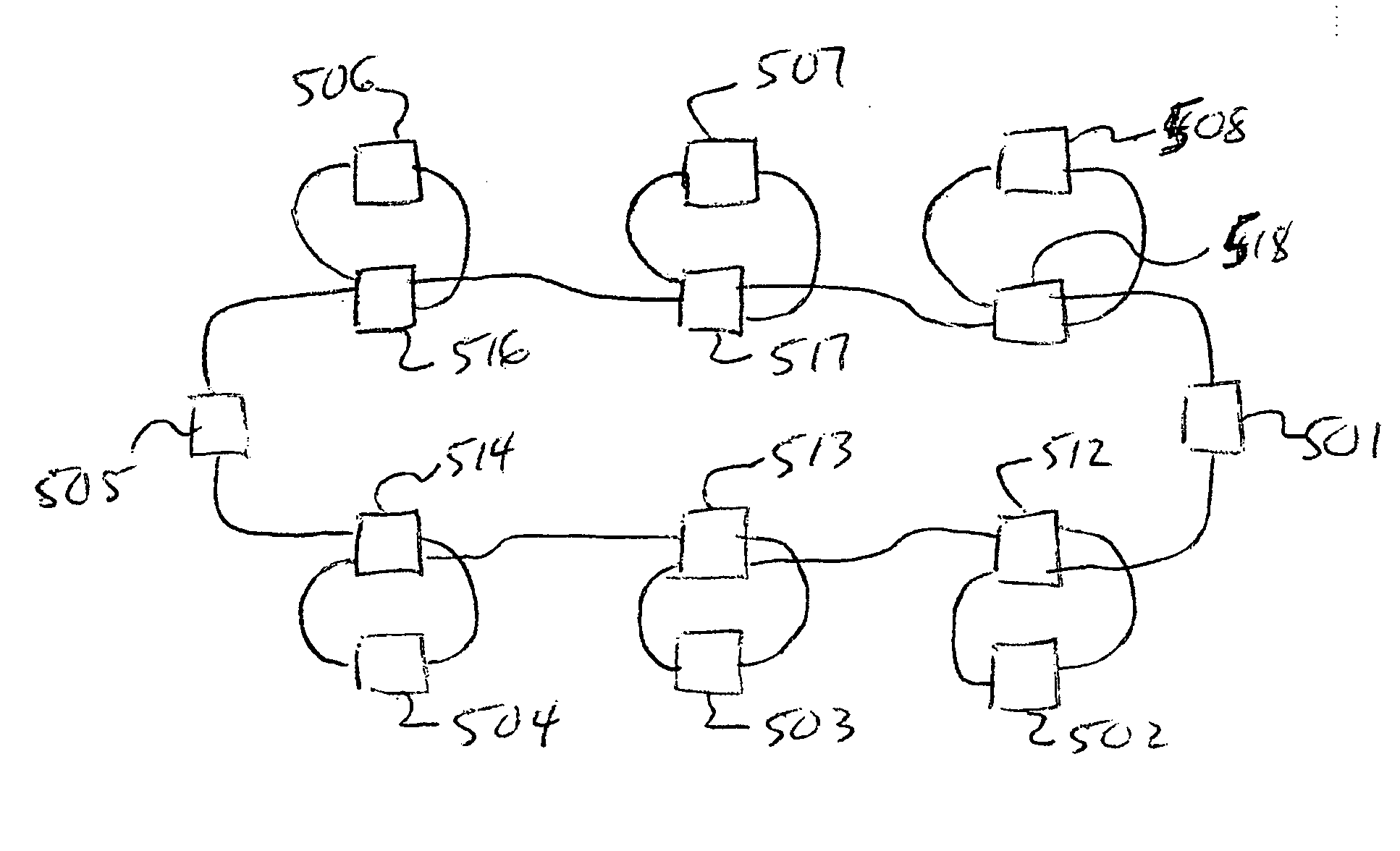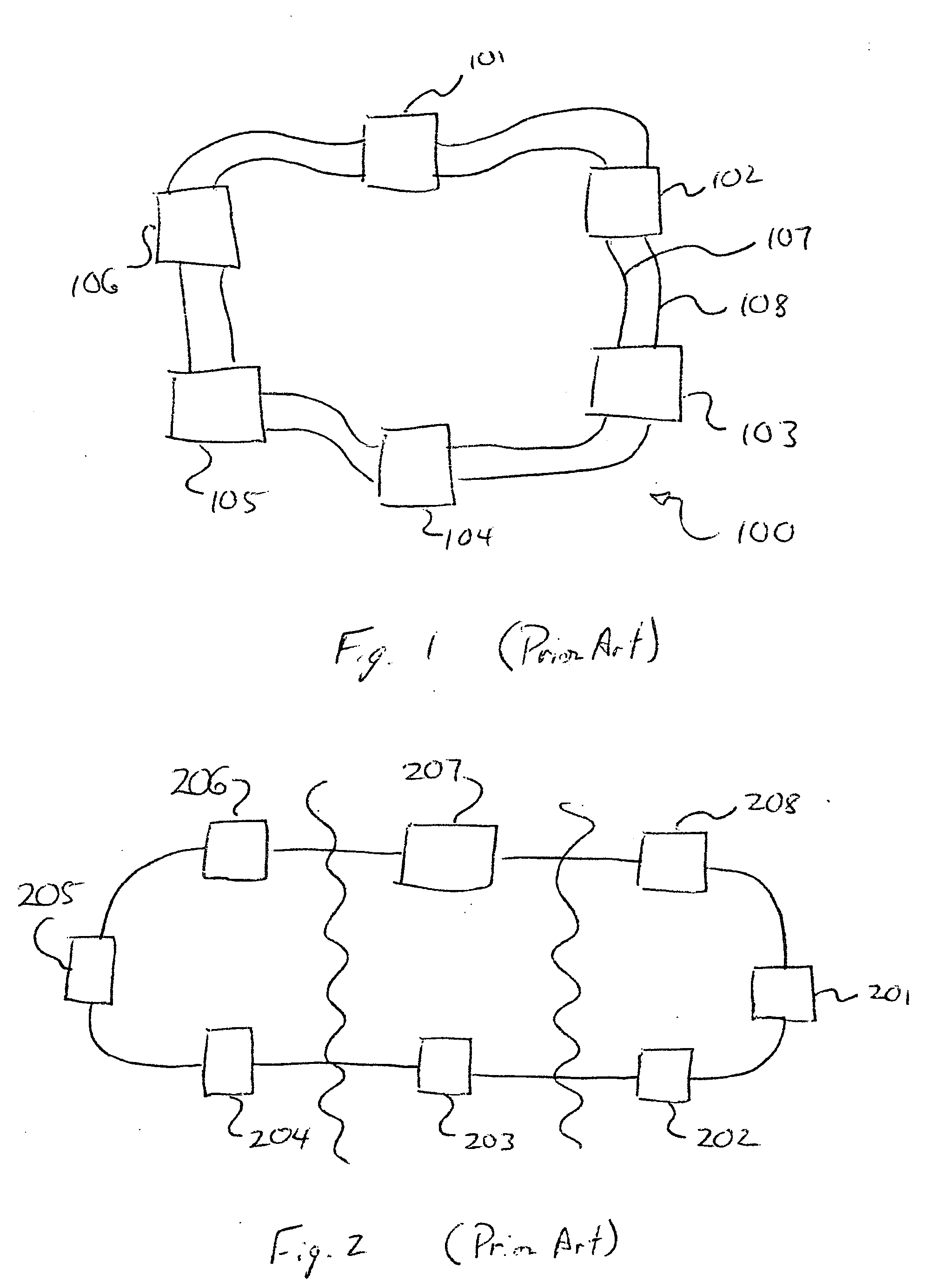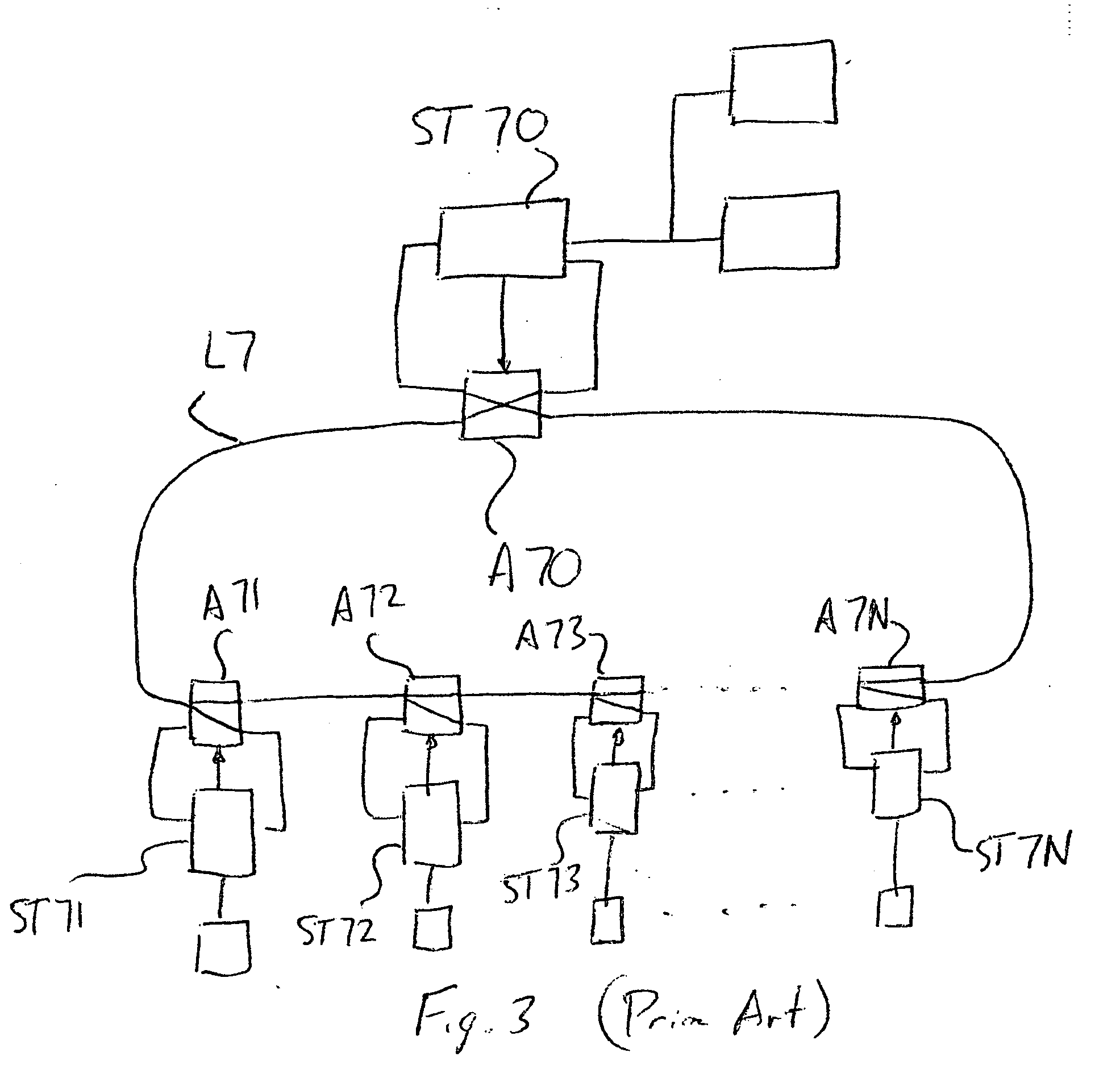Robust service delivery node and method therefor
a node and service technology, applied in the field of optical networks, can solve the problems of a relatively small number of users, network equipment used to support metro and access applications is comparatively less robust and less complex than core network equipment, and the data rate and wavelengths are typically employed in core networks
- Summary
- Abstract
- Description
- Claims
- Application Information
AI Technical Summary
Benefits of technology
Problems solved by technology
Method used
Image
Examples
first embodiment
[0046] Referring to FIG. 5, a Sonet ring 500 according to the invention is shown. The Sonet ring comprises nodes 501 to 508. In this system the operation of nodes 501 and 505 is considered critical whereas the operation of nodes 502 to 504 and 506 to 508 are not considered critical. Each of nodes that are not considered critical have an optical cross connect switch 512 to 514 and 516 to 518 as described with reference to FIG. 4a and FIG. 4b optically coupled thereto. Those nodes that are considered critical feature independent electrical power sources. The optical cross connect switches act to ensure that nodes that are not considered critical are bypassed when they are not receiving power. Specifically, optical cross connect switch 512 is set to divert optical signals to node 502 when the optical cross connect switch 512 is receiving sufficient electrical energy. The electrical energy provided to the optical cross connect switch 512 is provided by the node 502. Thus, when node 502 ...
second embodiment
[0050] Referring to FIG. 7, a unidirectional path switch ring (UPSR) network 700 according to the invention is shown having nodes 701 to 704 a first ring 709a and a second ring 709b. Each of the nodes is supported by two cross connect switches 711a and b to 714a and b. The switches are coupled to their associated nodes in a fashion that causes them to change state thereby preventing optical signals from being provided to their associated node when the node does not receive a predetermined amount of power. Similarly, when an appropriate level of power is provided to the node the switches maintain another optical path that supports optical communication between the node and the rings 709a and 709b.
[0051] A person of skill in the art will appreciate that a wide variety of different switching optical network topologies are also supported according to the invention. For example, the network shown in FIG. 5 is consistent with a single ring bi-directional line switched ring (BLSR) network...
fourth embodiment
[0054] Referring to FIG. 10, a schematic diagram of a mesh network 1000 according to the invention is shown. The mesh network 1000 comprises nodes 1001, 1002, 1003 and 1004, data links 1005, and optical switches 1010 and 1011. The optical switches 1010 and 1011 support an optical connection from an input port 1010a and 1011a to any one of three corresponding output ports 1010b, 1010c, 1010d, 1011b, 1011c and, 1011d. In this embodiment of the invention the switches 1010 and 1011 are synchronized such that the switches are maintained in a similar state. Thus, when switch 1010 is providing an optical connection from 1010a to 1010b then switch 1011 is set to provide an optical connection from 1011a to 1011b. The nodes of the mesh network support add-drop functionality. In use, when it is desired to provided data from node 1001 to node 1003 a data path is established from node 1001 to node 1003 via node 1002. If node 1002 goes into a bypass-mode then a new data path is established in whi...
PUM
 Login to View More
Login to View More Abstract
Description
Claims
Application Information
 Login to View More
Login to View More - R&D
- Intellectual Property
- Life Sciences
- Materials
- Tech Scout
- Unparalleled Data Quality
- Higher Quality Content
- 60% Fewer Hallucinations
Browse by: Latest US Patents, China's latest patents, Technical Efficacy Thesaurus, Application Domain, Technology Topic, Popular Technical Reports.
© 2025 PatSnap. All rights reserved.Legal|Privacy policy|Modern Slavery Act Transparency Statement|Sitemap|About US| Contact US: help@patsnap.com



